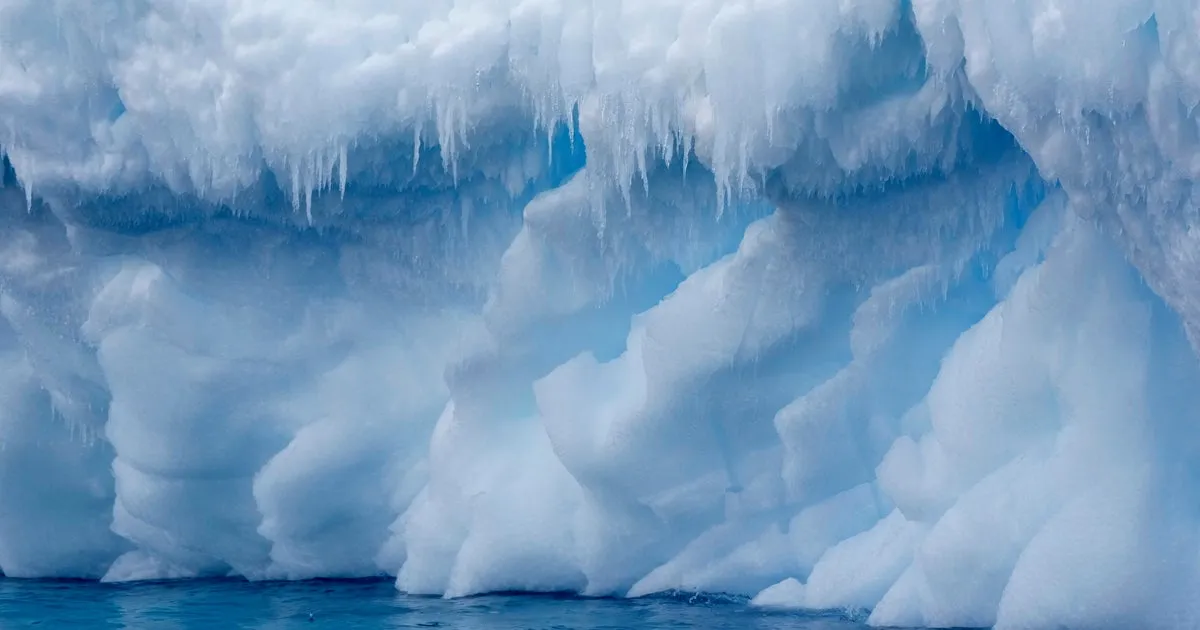
Scientists have issued a dire warning about the abrupt and potentially irreversible changes occurring in Antarctica due to climate change, which could raise global sea levels by several meters, leading to catastrophic consequences for future generations. This alarming conclusion was drawn from a comprehensive state-of-knowledge review conducted by a panel of top experts, as detailed in a study published in the esteemed journal Nature. The study reveals that these changes are both a consequence and a driver of global warming, underscoring the urgent need for action.
The authors of the study emphasize that limiting CO2 emissions is crucial in preventing global temperatures from rising above 1.5 degrees Celsius. This limitation is essential for mitigating the wide-ranging effects of sudden changes in the Antarctic region and the Southern Ocean. Professor Nerilie Abram from the Australian National University, the lead author of the study, highlighted the alarming signs of rapid transformation in Antarctica, affecting its ice, oceans, and ecosystems.
The research examined various aspects of Antarctica's climate system, including sea ice, ocean currents, the continent's ice sheets, and ice shelves, as well as the marine life that inhabits these areas. One key finding is that while melting floating sea ice does not contribute to sea level rise, its retreat replaces reflective white surfaces with dark water, which absorbs solar energy instead. This shift exacerbates global warming, as the oceans absorb approximately 90% of the heat generated by human activities.
Antarctic sea ice cover has experienced a dramatic decline over the past decade. After a slight increase during the first 35 years of satellite observations, sea ice has retreated by an average of 120 kilometers (about 75 miles) from the continent's coastline since 2014. This contraction is occurring at a pace three times faster than the decline of Arctic sea ice over a span of nearly 50 years. By July 2025, the daily extent of sea ice in both hemispheres reached its third lowest level in the 47-year satellite record, according to data from the National Snow and Ice Data Center at the University of Colorado Boulder.
Research from NASA indicates that between 2003 and 2019, Antarctica and Greenland lost thousands of gigatons of ice, contributing to more than half an inch of global sea level rise. The Thwaites Glacier, a significant part of the Antarctic Ice Sheet, is deteriorating rapidly, with scientists predicting further melting that could trigger rising sea levels. Studies conducted by the International Thwaites Glacier Collaboration show that the volume of water flowing into the ocean from the Thwaites Glacier and nearby glaciers has doubled from the 1990s to the 2010s.
The evidence of a regime shift in sea ice suggests that Antarctica could become ice-free in summer sooner than the Arctic, accelerating warming in the region and threatening marine species with extinction. For instance, emperor penguin chicks have suffered significant losses at multiple breeding sites, drowning or freezing when the sea ice melted earlier than expected. In 2023, five monitored sites in the Bellingshausen Sea reported a complete loss of chicks at all but one location.
Unlike floating sea ice, ice sheets and their connected ice shelves are situated on land. If global temperatures increase by 5 degrees Celsius compared to pre-industrial levels, it could lead to the complete melting of the Antarctic ice sheet, resulting in an unprecedented rise in global sea levels of nearly 58 meters (about 200 feet). Current average global warming of approximately 1.3 degrees Celsius is nearing a threshold where significant portions of the ice sheet could contribute to at least three meters of sea level rise, threatening coastal areas inhabited by hundreds of millions of people.
The study identifies the unstoppable collapse of the West Antarctic Ice Sheet as one of the most critical global tipping points. Evidence suggests that this collapse could be triggered at global warming levels well below 2 degrees Celsius. Additionally, the potential collapse of the Antarctic Overturning Circulation, which regulates ocean currents distributing heat and nutrients, poses another significant risk. A rapid slowdown of these currents has already begun, with past interglacial periods indicating that similar conditions could result in abrupt stagnation, leading to widespread climate and ecosystem impacts.
To mitigate these interconnected changes, it is imperative to halt the release of additional planet-warming gases into the atmosphere. The decisions regarding greenhouse gas emissions made in the coming decade will determine the extent and speed of ice loss in Antarctica. Professor Abram warns that our actions today will significantly influence the future of our planet’s climate and ecosystems.